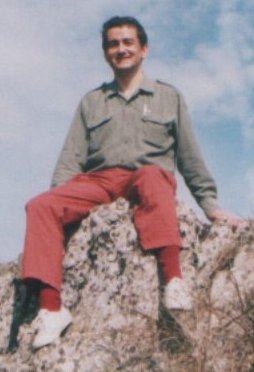 David Nowell wonders why the Ordnance Survey is preventing the sale of its own products when people want to buy them.
David Nowell wonders why the Ordnance Survey is preventing the sale of its own products when people want to buy them.
I recently overheard a bizarre conversation. Apparently, the Ordnance Survey (OS) no longer allows retailers to sell contoured 1:10,000 to 1:5,000 printouts to the general public. Chatting to their topographic IT expert, I discovered that this has left customers puzzled and confused, because the OS patronisingly presumes that people fit neatly into their inflexible user-groups.
CONTOURS
Even if geologists can afford their eye-watering prices, this causes immense problems, as fieldwork often requires contours. And, where recent mapping has been completed, the British Geological Survey must sell their 10k geological maps with OS base maps for £80 each, so that even professionals balk at using them.
In contrast, German regional surveys produce cheap 5k maps, including annotated contoured aerial photographs with invaluable coverage within quarries and spot heights on rivers. Even on some 100k maps you can see how the river Rhine steepens going through the Lorelei Gorge. In France the IGN sells géorando disks with enlargeable 25k mapping and aerial photography, which yield stunning 3D block-diagrams to look in detail at the geomorphology of a selected area.
Even without mildly jingoistic assumptions about our beloved OS maps (France was mapped in great detail in the late 18th Century) things could be improved. If the residents of Ventnor on the Isle of Wight can be trusted with complex mapping, zoning the risks to their homes from landslips, why can’t we add spot heights to rivers? Surely the Environment Agency can tie them in to local flood gauges, to benefit residents who are sometimes unfairly blighted by their insurers. And in flatter areas, is it asking too much for their cartographers to look at continental maps and plot intermediate 2½ m, if not 1¼ m contours, as many countries do?
EXPLORER
Instead, there is a great temptation to fall back on the 25k ‘Explorer’ series and scan an enlargement for detailed contours. Just like the music industry mishandling new technology, the OS should not be surprised if this results in lost revenue. Successive governments have failed to grasp the wider benefits of affordable mapping by ensuring that economic gains were picked up by effective corporate taxation. Before mapping was considered passé, the BGS published some innovative 50k posters of Anglesey, using Lidar images as base maps to reveal the geomorphological grain of the glacial landscape, and the outstanding 625k bedrock geology (5th edition) maps used a rival cartographer as the kilometre national grid is out of copyright.
These 25k maps could have limited tidal information, like the levels stated on some BGS 50k coastal sheets: many educated people wrongly assume Ordnance Datum is synonymous with spring high tide – actually, over seven metres above OD in places along the Bristol Channel. Furthermore, since the Explorer series has ensured that fewer topographic maps are being sold, by covering much larger areas than before, why can’t the OS produce a third 1:50,000 series on new sheet lines? These could be printed on bigger sheets of paper: their bilingual maps of Wales already extend to an extra ninth fold, and a tenth would be quite feasible.